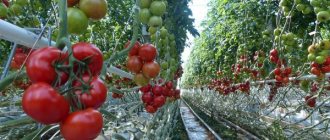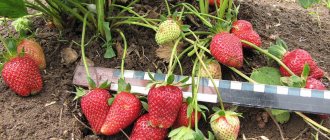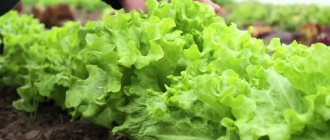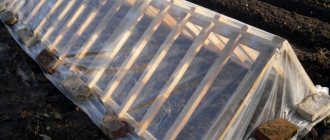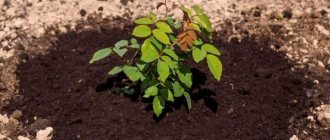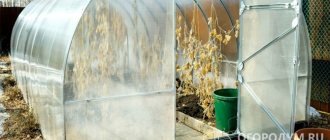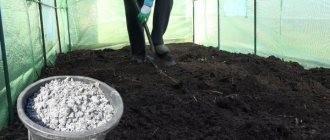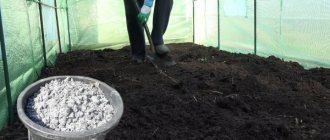Despite the fact that all seed packages contain information about the ripening time of planted vegetables and fruits, experienced gardeners know that it is pointless to follow formal instructions. Each beet crop behaves differently depending on the variety, weather conditions, and other factors that are hardly possible to take into account. We will tell you further about the timing of beet harvesting depending on its variety, and how best to store the harvested crop.
Beet harvesting time
When can you start harvesting beets?
Since beets do not tolerate frost, they are harvested in the second half of September. The fact is that this vegetable protrudes slightly above the soil surface and is therefore more sensitive to temperature changes. However, in warmer regions, the collection time may be delayed until mid-October, since the most important thing is to be in time before the temperature begins to drop to negative values at night.
It is important to have time to harvest beets before the onset of cold weather.
At the same time, it is important to keep the beets in the ground at low (2-3 degrees above zero) temperatures - this way the root vegetables will acquire their characteristic sweetness and quickly accumulate the necessary vitamins. The later the variety you plant, the sweeter it will end up.
Signs of maturation
Since it is hardly possible to predict early autumn temperature changes in advance, it is recommended to focus on the external criteria of the root crop. Signs indicating that beets are ripe include the following:
- The beet tops acquire a yellow tint (especially the lower leaves) and wither. The symptom cannot be called universal - if the summer is dry, the leaves may turn yellow too early;
Yellowing of beet tops is sometimes associated not so much with the maturity of the vegetable, but with the climate
- The appearance of growths on the vegetable indicates that it is beginning to sprout - this is a sure signal that the beets are ready. The appearance of light roots indicates the proximity of unwanted secondary germination. Further overexposure may cause the root crop to take root;
- The dimensions and weight of beets correspond to the average characteristics of a vegetable of this breed. On average, beets reach ten centimeters in diameter, but there is no single criterion. Early-ripening varieties are usually smaller than mid- and late-ripening varieties.
- Warm sunny autumn. Sometimes Indian summer can last all of September and even cover part of October, but you shouldn't be tempted by good weather. If you overcook beets, even if the correct temperatures are maintained, you risk getting a fibrous and astringent vegetable;
- Autumn with a lot of precipitation. On a reasonable scale, rain provides an invaluable service and irrigates the soil, making it more susceptible to harvesting. However, an excess of moisture leads not only to a change in the taste of the final product, but also to rotting of the beets even before they are removed from the ground;
- Dry autumn. If dryness is combined with moderately warm temperatures, then this option is the best. With a successful combination of circumstances, the beets can be kept in the ground longer, postponing their movement to the cellar. Of course, a long absence of rain can dry out the soil, so it is advisable if it rains the day before harvesting root crops.
The harvested beets must meet the standards of their variety in size and weight.
Of course, while the root crop is in the ground, it is difficult to determine its size. In order to find out the condition of the entire crop, it is not necessary to dig up all the vegetables, since if you make a mistake, all that remains is to dispose of them. To avoid such costs, you should dig up one beet and analyze its appearance. If it suits you and meets your expectations, you can begin digging up the remaining root crops.
In order to determine the degree of maturity of the crop, it is enough to test one root crop
Weather
Each region has its own seasonal characteristics. It is not possible to review all possible scenarios; let’s consider the most common ones:
Even if temperatures remain warm in the fall, beets must be harvested on time
Irrigating the garden with rain the day before harvest will benefit the beets
Beet prices
Beet
How to properly dig up beets from the garden
As noted above, it is best to harvest on a dry, sunny day, preferably in the first half of the day. You should not carry out the procedure in humid and cloudy weather.
Only whole root vegetables can be successfully stored all winter. For this reason, when harvesting, beets must be handled very carefully to avoid damage.
To properly harvest beets, you need to carefully dig up the root crop with a shovel or pitchfork . Although many gardeners successfully simply pull the vegetable out of the ground (but this is influenced by some factors, for example, with light sandy soil it is easier to pull it out than with heavy and clayey soil).
Note! Despite the fact that many gardeners simply pull the plants by the tops and take them out of the ground, this method can be called controversial, because under unfavorable circumstances the skin can easily be damaged, which will significantly reduce shelf life. Therefore, it is still better to initially dig slightly with a shovel or pitchfork, and then carefully pull the tops.
Vegetables are stacked in a row to make it easier to sort the crop after the procedure and prepare it for storage.
Errors when harvesting beets
The main errors relate to the time of collection and are divided into two types. The farmer either overcooked the treasured vegetables or removed them from the soil too early. In the first case, negative consequences sometimes do not manifest themselves immediately. The seemingly beautiful root vegetables move into the cellar, and only after a month or a couple of months do you notice that half of the fruits are already beginning to rot. The reason for this may be either incorrect storage conditions or keeping the beets in the soil for too long, during which time the vegetable has had time to freeze thoroughly.
Beets harvested early will have a less intense flavor.
If the beets are removed prematurely, the results may not be so disastrous. You may end up with an unripe vegetable that can be eaten, but does not have the recognizable taste qualities that are inherent in beets.
How to properly store beets in winter
The optimal storage temperature is 2-3 degrees Celsius , while t should not fall below 0 and be above 5. Humidity should be about 90 percent , otherwise the fruits will dry out and become wrinkled. There should be no risk of freezing. In addition, the room should be dark.
Without optimal storage conditions in winter, beets will not be able to store properly and will quickly deteriorate. It is especially important to provide them in the first two months of storage.
It is best to store beets in a dark, cool, well-ventilated area. Ideal for a basement, cellar, glassed-in balcony, storage room. Some gardeners store the harvest in their apartments, but at home at normal room temperature the harvest can be stored for no more than two months.
Types of beets
It is not possible or advisable to describe all existing beet breeds and their characteristics, so we will focus on the classification of beets in connection with the time of their ripening. We will also indicate some examples of varieties so that by name you can orient yourself in the characteristics of the root crop and the time of its collection.
Table 1. Types of beets by ripening time
| Type | Description | Examples of varieties |
| Early ripe beets | This type of beet ripens within two and a half to three months, depending on the climate and soil type on the site. The main disadvantage of such fast-growing beets is that they have a less rich taste compared to long-ripening varieties. The harvest of early ripe beets begins in mid-July and ends at the end of August | Aksinya; Vodan; Zarnitsa; Elizabeth; First harvest; Skvirsky gift; Egyptian flat; Scarlet Supreme |
| Mid-season | Such beets are most common in the Russian climate. It reaches maturity in three to three and a half months. When planting early-ripening beet seeds in May, you can begin harvesting by the beginning of September. This beet can be easily stored until the end of winter if the storage rules are followed. It is moderately sweet and is great for both vegetable salads and borscht. | Crimson Ball; Ideal; Crosby; Black woman; Russian single-seeded; Globe; Granddaughter; Bordeaux; Mona; |
| Late ripening | Late-season beets can take up to 140 days to mature, but the end result is worth the wait. Late-ripening beets can be stored until the next harvest without losing their tart, rich taste. Grown mainly in warm regions as it is harvested in early to mid-October | Detroit; Patrick; Cornell; Sonata; Torpedo; Front; Opolski; Redondo; |
Harvesting time by variety
The juice of the sugar root vegetable benefits the body. It can remove toxic substances, lowers cholesterol, increases the level of red blood cells in the blood and lowers blood pressure. But the vegetable must be removed on time and stored correctly. The timing depends on the varietal type of vegetable crop. Harvesting time by variety:
- Early varietal species (Boyarynya, Pomegranate juice, Kuban borscht) ripen in 50-80 days and can be harvested by the end of July. These varieties are a little more difficult to preserve than mid-season ones. They are consumed within 60-90 days.
- Mid-season varietal species. The ripening period in central Russia and the Moscow region is 80-100 days. Collected from the site from August 15 to September 15. Vegetables are stored well, but by spring they begin to sprout. The most famous varietal types are Bordeaux, Red Bogatyr, Rocket, Cylinder.
- Late varietal species (Commander, Matrona, Ethiopian) are harvested for storage from September 15. Root crops are perfectly preserved until fresh harvest, without losing their excellent taste and marketability.
You should be extremely careful when consuming vegetables with low blood pressure, urolithiasis, gout and high acidity. Beet root vegetables are a laxative and it is better not to consume a lot of them. There are 4 main types of beets:
- Dining room. Used in cooking. Due to the fact that it contains a lot of betaine, the vegetable is red and is valued in cooking, cosmetology and medicine. Due to the fact that beets have a positive effect on the skin and moisturize well, they are included in creams. Due to folic acid, it is useful for women during pregnancy.
- Stern. Used as livestock feed. It is actively given to animals, it increases milk yield, enriches it with vitamins in winter.
- Sugar. This is a technical crop, granulated sugar is created from it. After squeezing the sugar, cake remains and is used to feed livestock.
- Leafy. They are used both for animal feeding and in culinary dishes. The main value is the foliage due to its protein content (up to 25%), but the root cannot be consumed. Easy to grow, Swiss chard is overly seasonal.
All varieties are of the same origin - a wild vegetable crop, cultivated by breeders.
If the autumn is warm, the vegetable crop will sprout again. But such beets will be tasteless and poorly preserved. Therefore, it is so important to harvest in a timely manner, guided by the advice of experienced vegetable growers and the Lunar calendar.
Beet harvesting in Siberia
Siberia is not a region suitable for growing vegetables. However, if you have the necessary knowledge and certain equipment, you can safely engage in vegetable growing on its territory. For growing in Siberia, the optimal solution would be to choose mid-season varieties. In conditions of cool spring and the same summer, early-ripening beets may turn out to be under-ripe, and the risk of late-ripening beets being frozen is too great.
Growing beets using seedlings is the most effective way in Siberian conditions
In the harsh Siberian climate, the use of seedlings will be more profitable than the use of seeds. Seedlings provide a greater likelihood of obtaining a rich harvest and further survival of vegetables in cellar conditions.
Beet harvesting in the Urals
The Urals are characterized by the onset of frosts even in warm summer seasons. In such conditions, beets often die in the soil before they have time to ripen. In this regard, Ural summer residents practically do not use early ripening beets, which in most cases are doomed to death. To ensure greater preservation of root crops, it is recommended to grow seedlings in greenhouses for later use.
In cold winter conditions, it is recommended to grow beets in greenhouses
Most often, seedlings are buried in the soil in early May, after which the beets are given time until the end of August to ripen. When planting seeds or seedlings in June, the harvest is harvested in mid-October, but such a late harvest time can also lead to hypothermia of the fruit.
Harvesting beets
There is no consensus on the best way to extract beets from the soil. Some gardeners suggest making do with their own hands, while others use improvised means. A lot depends on the beets and the soil.
The larger the beets have reached, the more difficult it will be to remove them from the soil.
Beets that reach a large diameter are difficult to grow, especially if the soil itself is dry and hard. Then, in order to avoid cracks and mechanical damage to the vegetable, you have to use equipment. The instructions given below will be based on the most difficult and unfavorable conditions for harvesting beets.
Rules for collecting beets
- Choose a dry day without precipitation. Harvesting beets during rain will negatively affect their preservation;
- Prepare special equipment: a sharpened knife, a shovel and a container for collecting root vegetables;
- Carefully dig up the soil around the vegetable so that it can be removed without unnecessary effort;
Before removing the beets, loosen the soil around the root crop
The removed tops can later be used to prepare various dishes
The collected beets must be dried indoors or outdoors.
Important! If the beets were collected in dry and warm weather, then they can be dried directly on the site. In fresh air, beets require much less time to dry - only a few hours. If the harvest day turns out to be rainy, the root crops will have to be dried in a room that meets the criteria specified in paragraph seven.
Sorting
Before sending beets for long-term storage, it is necessary to conduct a thorough analysis of the root crops to determine their suitability. If you add just one damaged vegetable to dozens of healthy ones, the rotting process will quickly affect all the beets in one container. Therefore, the sorting procedure should be approached with special attention:
- Fruits that are damaged during cleaning, begin to rot, and are painful in appearance must be immediately disposed of or consumed - at the discretion of the farmer;
Before sending beets for storage, it is necessary to remove rejected root crops
Shelf life depends not only on the size, but also on the variety of root crop
Video - Collection and storage of beets
Why you can’t dig up ahead of schedule
You can’t dig in advance because closer to autumn, when the temperature gradually decreases, the vegetable grows very well. The second reason is that most useful microelements in root crops accumulate already in the final stage of growth. But you can’t delay harvesting until frost either. Protruding “butts” can get frostbitten, and the beets will quickly spoil when stored. It is not enough to grow a rich harvest; it must be properly harvested and stored.
When starting to dig up root crops, take into account the following important points:
- Vegetables are harvested when the street is dry and clear, so that the ground is not wet. The last watering is carried out 14-21 before harvesting. Excess moisture negatively affects the further preservation of the crop.
- The beets are pulled out of the soil by hand. This makes it possible to avoid injury to root crops during harvesting. If the soil is dense, use shovels or pitchforks. Use tools carefully so as not to damage the fruit. Through wounds the vegetable becomes infected. Such beets quickly rot and infect the remaining heads.
- The tops must be cut off. Or the foliage will evaporate the moisture, and the root crops will quickly wither. The tops of the vegetable are cut using pruning shears or standard scissors, leaving stumps 10-15 mm long. If the root of the root crop is very long, it is cut off.
- The harvested beets are dried for a couple of days in the open air under a roof.
- Sorted. Deformed, damaged and small ones are set aside for processing or quick consumption.
There is no need to remove stuck soil from vegetables by hitting them against each other. This damages the skin of the fruit, which affects the storage time in winter. It's better to clean by hand.
Beet storage
Beets are quite unpretentious, unlike carrots, and do not require strictly defined conditions. It can be stored both in a summer cottage - in a basement or cellar, and in a city apartment - on a balcony or even in a refrigerator. Moreover, this vegetable can be stored even in the fresh air - in trenches or pits.
Storage methods
Storage options are similar for many root vegetables, so if you have already encountered the need to put potatoes or carrots in the cellar, then the “recipes” described below will seem surprisingly similar to you.
Combining beets with potatoes
In order for both vegetables to be better preserved, potatoes should be placed on the bottom layer, and beets on the top. Potatoes do not like excess moisture, while beets are loyal to it. Therefore, if the beets are on top, they will be able to absorb excess liquid from the potatoes, thereby creating an ideal tandem and preventing rotting.
Beets complement potatoes well and absorb excess moisture.
Dipping beets in clay
Clay has long established itself as an excellent remedy that prevents the proliferation of pathogenic bacteria and the spread of moisture through root crops. To prepare a solution of the required consistency, it is necessary to mix fatty clay with water to ultimately obtain a substance that is similar in consistency to sour cream. To enhance the effect, you can add chalk powder to the resulting substance.
Immersing root crops in clay promotes their better preservation
Dip each root vegetable separately into the solution, then give it time to dry. There is no need to worry about the safety of the vegetable - before using it, it will be enough to rinse the beets well so that all traces of clay are removed from them.
Sprinkling beets with absorbent
Several names can be used as an adsorbent:
It is permissible to use river sand as an adsorbent.
In order to use one of the listed adsorbents, you need to place the beets in boxes and sprinkle the root vegetables with the substance you like. Beetroot can be completely buried in sand, but it must be disinfected before use. The best choice would be river sand.
Salt can be used as a sprinkle and as a mixture. To prepare the mixture, simply dissolve a large amount of salt in water, dip the beets in it, and then thoroughly dry the root vegetable.
Wood ash prices
wood ash
Common mistakes
Despite its apparent simplicity, beginners, out of ignorance, can make a number of mistakes when digging, drying and storing beets.
- Digging up root crops. The beets are lightly dug up and then pulled out by the tops. If you dig like potatoes, you can damage the vegetables.
- Long drying time in the open air. Dry most of the time indoors. Vegetables are kept outdoors for no more than 4 hours.
- Storage in a damp place. The room must be dry to prevent rotting.

